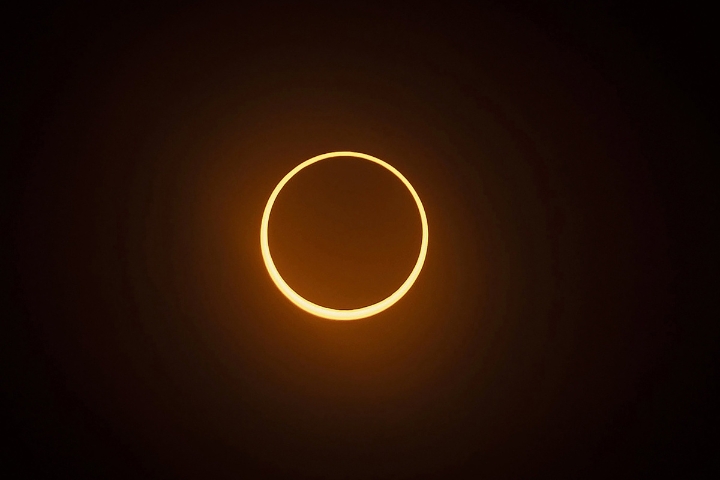On October 2, 2024, an annular solar eclipse will be visible, during which the moon will pass in front of the sun, creating a stunning “ring of fire” effect.
This year’s eclipse will last for an impressive 7 minutes and 25 seconds, covering 93% of the sun, according to Space.com. In contrast, the last annular solar eclipse on October 14, 2023, was visible for just 4 minutes and 52 seconds across the United States, Mexico, and parts of South and Central America.
About Ring Of Fire Solar Eclipse
According to NASA, a ring of fire eclipse occurs during a new moon when the Earth, moon, and sun are aligned. Unlike a total eclipse, which completely obscures the sun, an annular eclipse takes place when the moon is farther from the Earth and appears smaller. As a result, the moon cannot completely cover the sun, creating the visible “ring of fire.”
Typically, Earth experiences about two to five solar eclipses each year, while a total solar eclipse occurs just once or twice annually. The next occurrence of this phenomenon won’t be until 2026, when it will be visible in Spain, Greenland, and Iceland.
Where Can The Ring Of Fire Be Seen?
The ring of fire will only be visible over the Pacific Ocean, as well as in the southern regions of Chile and Argentina.
The annular eclipse will be visible in Chile and Argentina just before 5:30 PM local time. While April’s eclipse was seen by 32 million people across North America, this upcoming event will only be visible to around 175,000 people, making it a much rarer occurrence.
The eclipse will also be visible in Rapa Nui, or Easter Island, around 2 PM local time.
A partial solar eclipse will be visible in parts of North America, South America, Antarctica, and the Atlantic Ocean, where the sun will appear as a crescent. This includes locations such as Hawaii, Brazil, Uruguay, and Paraguay.
How To Safely View A Solar Eclipse?
It’s crucial to take precautions when viewing a solar eclipse; only use solar viewers and filters, as regular sunglasses are not safe for this purpose.
If you don’t have safe solar viewers, you can indirectly observe the eclipse by creating a pinhole projector to project the image of the sun onto a nearby surface. However, it’s essential to exercise caution when using such methods.





GIPHY App Key not set. Please check settings